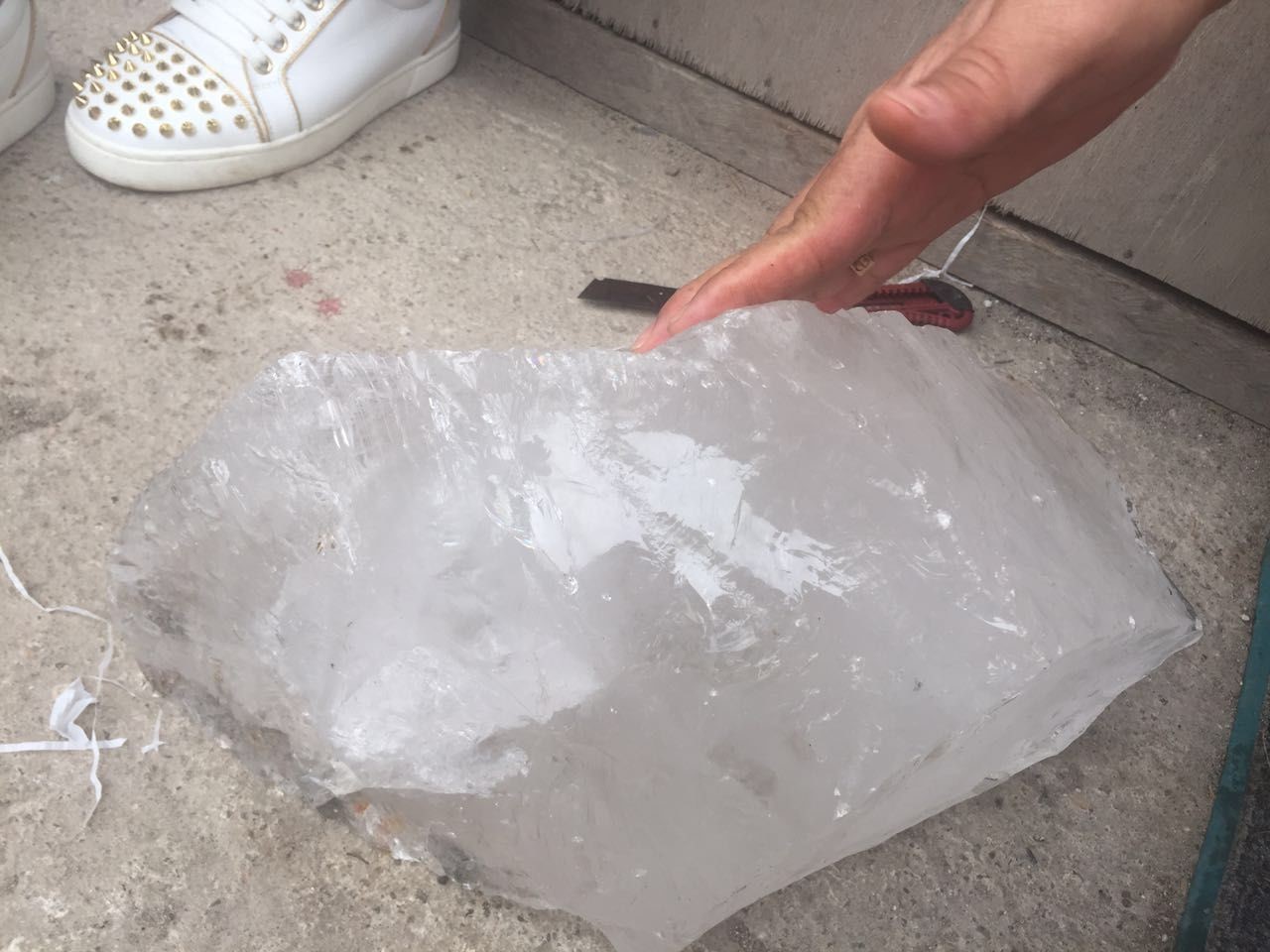Crystal Quartz

Crystal used to be the main raw material for high-purity quartz production. With the depletion of natural crystal resources and the increasing demand for high-purity quartz sand, the technology of producing high-purity quartz sand with quartz ore instead of crystal is becoming more and more important.
According to different metallogenic and physicochemical properties, quartz minerals can be divided into magmatic rock type, metamorphic type, hydrothermal type and sedimentary type. Among them, the quartz grains in granite pegmatite and vein quartz have a coarse grain size are easy to dissociate from monomers. They are ideal raw materials to replace natural crystals for processing high-purity quartz mid-end and high-end products, especially granite pegmatite. Although its quartz content is only about 30%, the quartz grain is extremely coarse (d>5mm), completely dissociated from the gangue after grinding, and the content of single quartz impurities is little.
The proven quartz minerals in China include 2.31 billion t of quartzite, 1.55 billion t of quartz sandstone, and 0.50 million tons of quartz. No large granite pegmatite deposits with industrial value have been found. Due to the distinctive characteristics of quartz resources in China, it is determined that the preparation of high-purity quartz from quartz raw materials with poor quality such as vein quartz and quartzite is the main direction of future research.
Quartz Impurity Analysis
Natural quartz impurities can be divided into three categories according to the size, distribution, and existence of the accompanying impurities: gangue mineral impurities, inclusion impurities, and crystal structure impurities. Common associated mineral impurities are feldspar, mica, rutile, calcite, fluorite, hematite, pyrite and clay minerals. The main impurity elements are Al, Fe, Ca, Mg, Li, Na, K, Ti, B, H.
Among them, Al and Fe are the most harmful impurities in quartz, which can not only exist in the form of accompanying impurity minerals, but also easily replace Si4+ in the quartz lattice to form new aluminum oxide tetrahedron and ferrite tetrahedron. Charge-compensating impurities such as K+, Na+, Li+, and H+ are introduced due to charge defects in the lattice. Al and Fe impurities are relatively easy to detect.
The associated gangue minerals can be effectively removed by conventional physical and chemical beneficiation methods, and the structure of inclusions can be destroyed by high-temperature calcination. After repeated strengthening of acid leaching and alkali leaching, the impurity content can be significantly reduced. However, the impurities in the quartz lattice are difficult to remove, and the impurities in the lattice often become the ultimate bottleneck that is difficult to break through in the processing of high-purity quartz sand.
Processing procedure
The processing procedure of high-purity quartz refers to the process of removing the associated gangue, inclusion impurities and crystal structure impurities in the original quartz ore, usually including calcination, water quenching, grinding, grading, water desilting, scrubbing, electrical separation, magnetic Selection, flotation, acid leaching, alkali leaching, high temperature (atmosphere) roasting and other processes.
High-purity quartz sand is quartz sand with impurity content of 0.0008%~0.005% and SiO2 content of 99.995%~99.999%. It is still produced by only a few developed countries. In China, only Pacific Quartz Company, Kaida Quartz Company, etc. There are not many enterprises, and they are produced through crystal as raw material. Due to technical blockade, reports on the technology and process details of high-purity quartz manufacturers, especially related foreign companies, are very rare. In principle, high-purity quartz is produced by treating vein quartz and pegmatite granite through a combined process of calcination-water quenching-grinding classification-scrubbing-gravity separation-magnetic separation-flotation-chlorination roasting-chemical acid leaching. At present, the high-purity quartz sand that domestic enterprises can produce is mainly medium and low-grade high-purity quartz sand with impurity content of 0.03%~0.005% and SiO2 content of 99.97%~99.995%.
For refined quartz sand for general industrial purposes, choosing a relatively simple process flow as much as possible can reduce the cost of beneficiation and purification. It is recommended to use scrubbing-desliming-magnetic separation process, which can meet the quality requirements of fine sand. For high-purity and ultra-high-purity quartz sand, which is used as high-tech sand, it is necessary to further purify the quartz sand by flotation, acid leaching, high temperature (atmosphere) roasting and other processes. The quality requirements of high-purity and ultra-high-purity quartz sand are generally that the content of SiO2 is greater than 99.99%, and the content of Fe2O3 is less than 0.001%. The purification process should not only strictly control the selection conditions, but also have stricter requirements for the corresponding purification equipment to prevent secondary Pollution.


